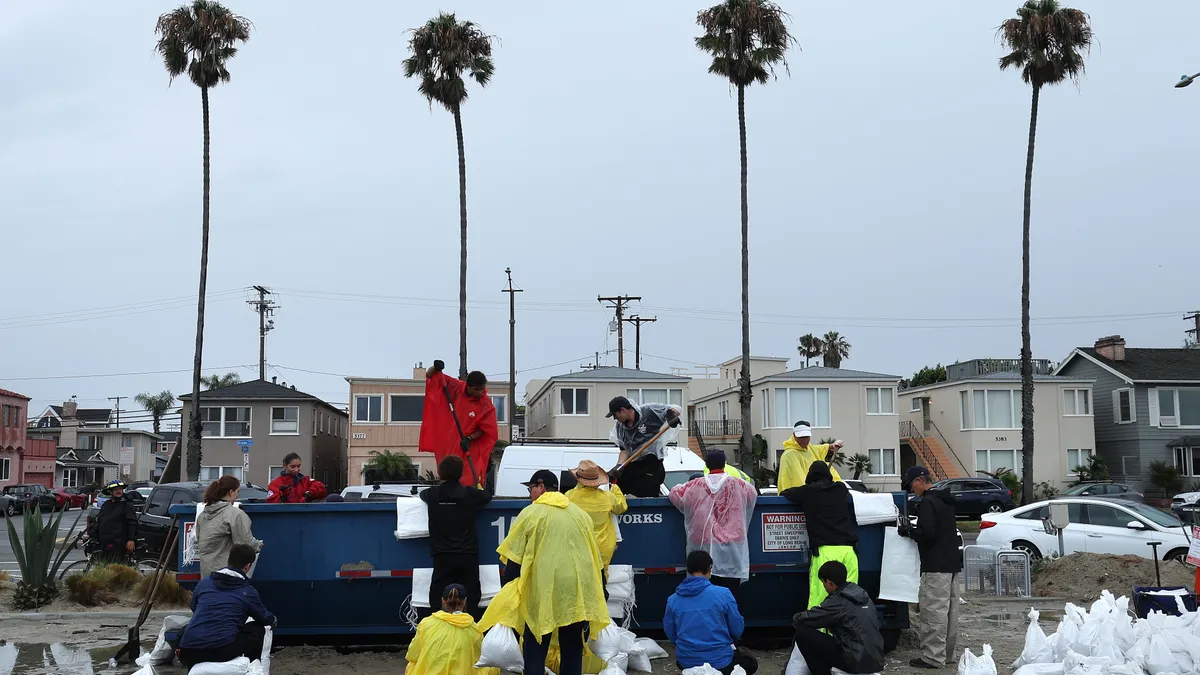Southern California faced its first tropical storm in 84 years this weekend, prompting cities and the state to declare emergencies, urge residents to take safety measures and ramp up emergency response efforts.
In the end, the storm caused less damage in California than was feared, although it flooded many roads and left thousands of people without power. Palm Springs was cut off by road closures on Monday, but San Diego and Los Angeles — the region’s most heavily populated areas — reported no storm-related deaths as of Monday.
“Fortunately, we have had plenty of advance notice in this event, and we took the necessary forward-thinking steps, just as many of you did within the city,” Los Angeles Fire Chief Kristin Crowley said at a Sunday press conference. In San Diego, County Supervisor Nora Vargas said at a Monday conference that she was grateful for regional coordination that allowed the community “to be ready for whatever the storm had in store for all of us.”
But it’s impossible to be fully prepared for a potential disaster, Jeff Schlegelmilch, director of Columbia Climate School’s National Center for Disaster Preparedness, told Smart Cities Dive. “Preparedness is more like fitness,” he said. “It’s not necessarily a discrete place that you’re trying to get to but more of an ongoing condition you’re trying to create.”
“But the politics of it, there’s always the pressure to give a definitive statement,” he said. “And I think that is a very dangerous thing to do.”
“It’s always a combination of preparedness and a little bit of luck” when communities avoid the worst of potentially catastrophic disasters, Schlegelmilch said. “But it’s also a cautionary tale,” he said, explaining that local officials may be lulled into a sense of preparedness even though the next disaster could hit their community with even more ferocity.
“Officials will say, ‘Well, we‘ve gotten flooding before, we did OK, we had some rough spots, but we did OK,’” Schlegelmilch said. “But what happens, especially as we’re looking at the impacts of climate change, we’re talking about more rainfall in a shorter period of time.” He pointed to the Texas freeze and blackouts, flooding in North California and remnants of Hurricane Ida that swept through New York — all hazards that these areas had experienced previously but came through with more ferocity.
Schlegelmilch pointed to two common mistakes officials make when preparing for storms. “One is they superficially ask for a plan or will do an exercise that’s not really designed to test but more designed to show off preparedness,” he said. The other pitfall emergency management officials face is that “the table was set for the response in budgets a decade ago” through, for example, an area’s housing policy, decisions on where to build and drainage system investments, Schlegelmilch said.
It’s tempting for people to say that damages are the result of a natural disaster or climate change, but “the piece that we often ignore when we‘re saying that is we built in this vulnerable area,” he said. “And we didn’t build to a level that is going to protect the people who were asking to live there and pay taxes.”
He urged officials to examine how their preparedness relates to their housing, economic development, education and transportation policy. “It all comes together to set the stage for these emergency management agencies, which often take the blame when things go wrong,” Schlegelmilch said. “Even if it’s something that was determined decades ago at a table that they weren’t at.”











